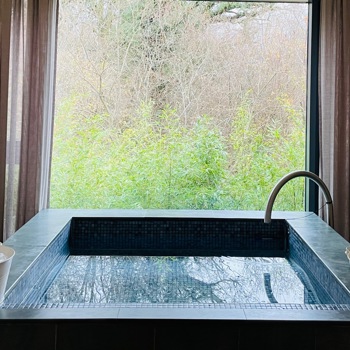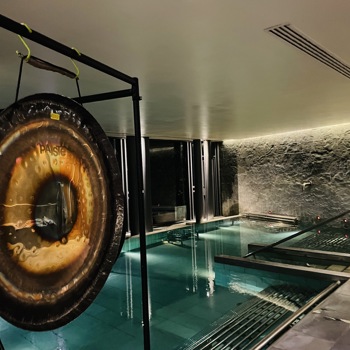
Contrast Therapy For Optimised Health and Recovery
Discover the ancient practice of Contrast Therapy and breathwork to boost recovery, immunity, and mental wellbeing.

In late 2012 Navy SEAL Team 6 got the call for a raid so fast and risky that it was voluntary: the rescue of an American doctor, Dr. Dilip Joseph, kidnapped while working in Afghanistan.
Chief Special Warfare Operator Edward C. Byers was part of the team that was inserted by helicopter into the Qarghah’i District of Laghman Province, where they spent four or five hours trekking across arduous terrain to get to the compound where they believed Joseph was being held.
As the team moved in, Byers was directly behind his teammate, petty officer Nicolas Checque, when he was shot and gravely wounded. Pushing forward Byers saw a figure move across the floor. Not knowing if it was hostage or enemy combatant Byers and lunged at him.
In the chaos of that situation, struggling with his night-vision goggles to identify the struggling body in the pitch-black Byers was able to make the right decision & subsequently received the Medal Of Honour for his actions.

How did Byers maintain calm enough to remain effective?
How does anyone under pressure control their own biological response?
As one SEAL instructor put it; "You bend the body's software to control its hardware."
Which is a way of saying that you must calm down the nervous system and regain control of your own biological response to pressure.
My time as a Royal Marine Commando serving in Afghanistan, and six years in the Fire and Rescue service, combined with a decade of learning and teaching yoga and calisthenics I’ve come to realise that we can all have this superpower.
Not many of us are going to be launching hostage rescue missions, but we do face pressure daily from a frustrating daily commute, financial strain, relationship disagreements, or caring for a sick loved one.
These are all situations that can trigger a chronic stress response and then keep it going for weeks, months, or even years at a time, and that is where things start to really go wrong.
But the problem in our "always-on" culture, being in a perpetual state of stress can start to feel normal. As our schedules get busier and busier, we adjust to a more hectic lifestyle without even realising that we seriously need to take action.
However, with simple adjustments, you can experience a world of difference.
So how do you hack your software and start removing that stress?
When you experience a stressful event, the brain functions like a command center, communicating with the rest of the body through the autonomic nervous system.
This has two components, the sympathetic nervous system and the parasympathetic nervous system.
The sympathetic nervous system functions like a gas pedal in a car. It triggers the fight-or-flight response, providing the body with a burst of hormones which trigger energy release so that it can respond to perceived dangers.
The parasympathetic nervous system acts like a brake. It promotes the "rest and digest" response that calms the body down after the danger has passed.
Most people spend each day with their ‘gas pedal’ pushed to the floor because of those constant stressors, and this is incredibly hard on the body. Then when they try and ‘de-stress’ they turn to the traditional recommendation of exercise.
Don’t mistake me, this is an important piece of the puzzle, but there is an even easier win that has a more dramatic and immediate effect.
Now breathing is something we all do automatically, BUT the way in which we breathe has a massive impact on our mind and body, I cannot overstate that.
Breathing is regulated by the autonomic nervous system and the amount of oxygen that we inhale through our breathing influences the amount of energy that is released into our body cells. On a molecular level, this progresses via various chemical and physiological processes.
Breathing is the easiest and most instrumental part of the autonomic nervous system to control and navigate. And the way you breathe strongly affects the chemical and physiological activities in your body. In short it’s incredibly powerful.
When things occur naturally we can often take these processes for granted and breathing is no exception to this rule. Respiration, as a process, is both ‘automatic’ and ‘manual’, as we can consciously check in with it and start to control it and then instantly go back to a conversation and forget about it all together.
But, if we fail to check in with this process, it can become inefficient. Think of a car … if it is neglected and it goes without a service for years then a number of things will start to malfunction. The human body is no different and breathing in particular plays a key role in what happens to us on a neurological and cellular level.
Yet many of us never harness the power of proper breathing to alleviate stress and maintain good health. And by switching from automatic to manual for just a short period each day (5-10 minutes) you can dramatically influence your own nervous system and stress response.
A relaxed breath originates in the belly and the optimal rate is 6 to 10 breaths per minute. However, most people breathe shallowly from their chest 16 to 20 x per minute, and it’s this shallow breath that keeps us feeling continuously on edge.
Think about times when you’ve felt stressed, when the body involuntarily becomes tense, your chest tightens and your breathing becomes very rapid and shallow. Well the chances are that your daily breathing is not far off this. Not so shallow that you consciously notice, but enough to be significantly affecting your stress response.
The slower and deeper you breathe, the better you'll feel. This is because deep diaphragmatic breathing strikes the ideal balance of oxygen and carbon dioxide in the blood, triggering various internal mechanisms that promote relaxation.
In my years of coaching experience I’ve seen how much a very simple breathing practice can make a huge difference. The great thing being that it doesn’t take long before automatic, unconscious breathing throughout the day also becomes deeper and slower.
I am going to throw down a challenge that I urge you to accept.
Try one of the two following methods (or experiment with both) at least once a day for the next 7 days. You can do this upon waking, during the day, before bed or when you feel stress creep up.
If you don’t see a change in your mood or energy you will be the first in the 5 years I’ve been setting this short and simple (less than 10 mins out of your 24hr day) challenge.
Nb. Method 1 is the practice taught to Navy SEALs in basic training.
1 - Lie on your back or adopt a comfortable seated position (with good posture)
2 - Close your eyes (if safe to do so)
3 - Take a full inhale through your nose for 4 seconds
4 - Hold at the top for 4
5 - Exhale for 4 seconds
6 - Hold empty for 4 seconds
7 - Repeat for 10 rounds / breath cycles
Notes - if 4 seconds is too much, reduce to 3 seconds, if it is easy move to 5 seconds.
1 - Lie on your back or adopt a comfortable seated position (with good posture)
2 - Close your eyes (if safe to do so)
3 - Take a full inhale through your nose for 3-4 seconds (Breathing into the abdomen first, then the lower side ribs, then finally the upper chest).
4 - Hold briefly at the top
5 - Exhale slowly and evenly through your nose for double the time of your inhale (Chest, Lower side ribs, Upper abdomen)
6 - Pause briefly
7 - Repeat for 10 rounds / breath cycles
Notes - if changing any aspect of the breathing try to maintain the ratios = 1:2. A long exhale has been proven to kickstart the parasympathetic branch of the autonomic nervous system.
If you would like a more step-by-step roadmap to eliminate stress, build mental resilience & dramatically increase your energy levels then take a look at our 30 day challenge.
In less than 30 mins of simple actions each day (that anyone can follow) you will:
Our Team’s knowledge & experience comes from the real world; Special Forces operations, training North Face adventure athletes & much more. We’ve seen adversity first hand both mentally and physically and taught others how to overcome it.
You can find out more here:

Discover the ancient practice of Contrast Therapy and breathwork to boost recovery, immunity, and mental wellbeing.

In this article, Tracey Howes, Freediver and resident Functional Breathwork Instructor, explores the restorative power of breath, sound and water. Drawing on principles rooted in freediving and nervous system regulation, Tracey invites you into a deeply calming experience designed to slow the body, soften the senses and create space for true restoration.

Hear from Lime Wood’s resident forager, Sammie, about how to embrace the seasons through wild harvesting, herbal preparations, and creating your own winter larder.